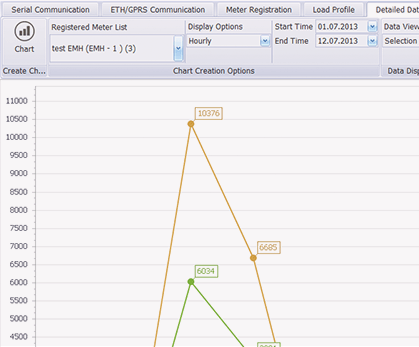

To communicate with the meters directly, the location of the HES remains in a demilitarized zone (DMZ), due to the services and functionalities provided outside. Head End Systems: The head-end system or HES, also called the meter control system, remains within the network of the metering company.Besides this, AMI can support future expansion possibilities and can host the latest facilities that are beyond the requirements of AMI. AMI ensures the presentation of authentic data and precision in communicating with the intended devices. Moreover, AMI is capable of representing consumer consumption data as well as the status of the grid. The functioning of AMI involves transferring huge data, the restriction imposed on accessing data, as well as confidentiality maintained for sensitive data. Thus, a highly reliable system of communication remains the fundamental design requirement of AMI. Communication infrastructure: The smart meters after collecting the data send the information to an analyzing system, and receive the commands from the operation center.Such optimization possibilities help consumers optimize energy usage and reduce energy expenses.Ī few important functionalities that smart meters provide generally are: For consumers, smart meters can help to optimize water metering, as well as other utilities like electricity metering, gas metering, etc. Smart meters are able to disconnect consumers remotely if there is an instance of default payments, which is a great benefit for businesses. Accepting commands and acting directly is what differentiates smart meters from Automatic Meter Reading due to bi-directional communication availability in AMI. Smart Meters: End-user smart meters are energy meters with innovative electronic hardware capable of measuring and collecting data in required time intervals.The vital components of the AMI system are as follows : The data is collected and communicated to Head-End Systems for sending to MDMS for managing, validating, and cleansing before making the data available for use to the utility service providers. There are a few major components that include the smart meter, collector, as well as a server system for connecting to a number of systems.

The most fundamental layer of a smart grid system is AMI integrated into several technologies, centered around a lot of networks. AMI systems can also manage energy cost and consumption and can help in reducing peak demand. A few crucial features like remote and automatic measurement of utility usage, connecting and disconnecting service, detection of tampering, monitoring voltage, etc., make such a system very useful.

The integrated system of AMI comes with a number of smart features that were not available earlier in the older systems.
#Dlms meter reading software manual#
Certain issues like data quality, manual transferring of data, and or missed reading affect the billing accuracy of such a system. The conventional method of meter reading uses AMR technology that allows reading of utility meters by walking near the meters and using handheld devices for recording consumption data.

There is an abrupt shift in the advanced metering infrastructure system from previously used methods for a meter reading. The system measures, collects, as well as analyzes energy usage, and further communicates with measuring devices, like electricity meters, heat meters, gas meters and water meters. Īdvanced Metering Infrastructure combines smart meters, data management systems, and communications networks, enabling two-way communications between customers and utilities. During the recent past, several utilities have adopted the Advanced Metering Infrastructure in order to increase the efficiency of the utility systems. The same phenomena is also unfolding in the power utilities market place with the maturing of the concept of smart grids capable of two-way communications. The integration of new technological features is changing the dynamics of business operations and offering new values to the customers.


 0 kommentar(er)
0 kommentar(er)
